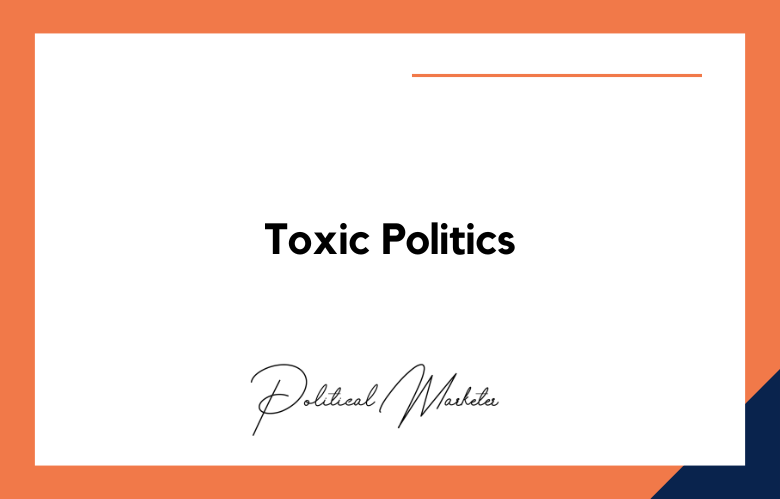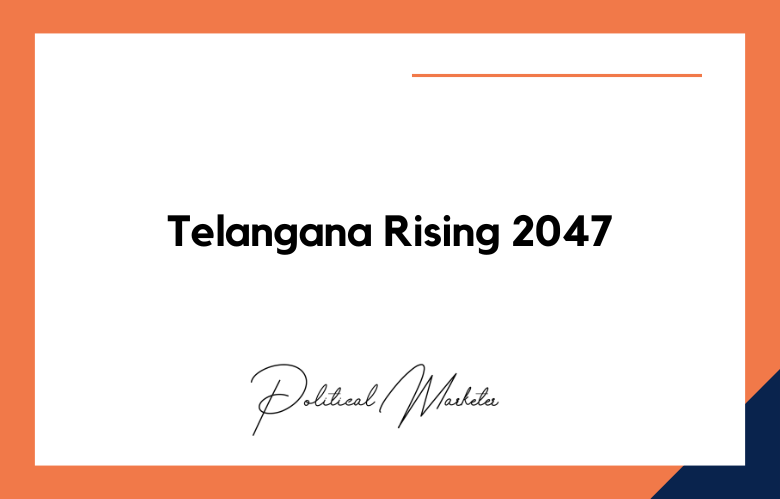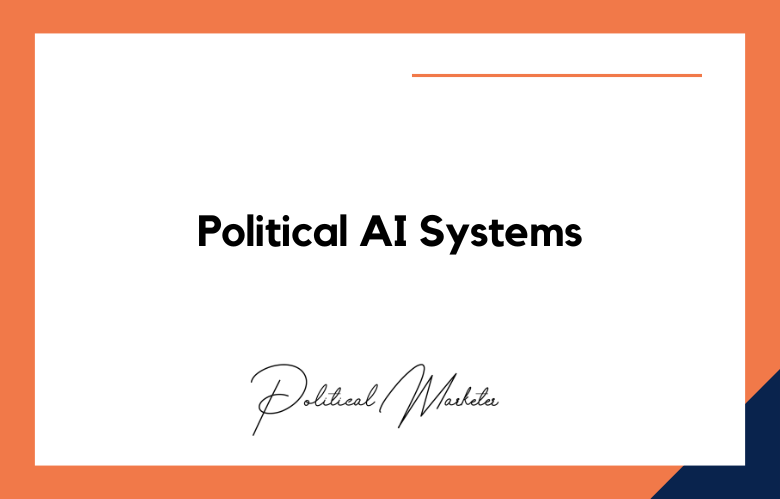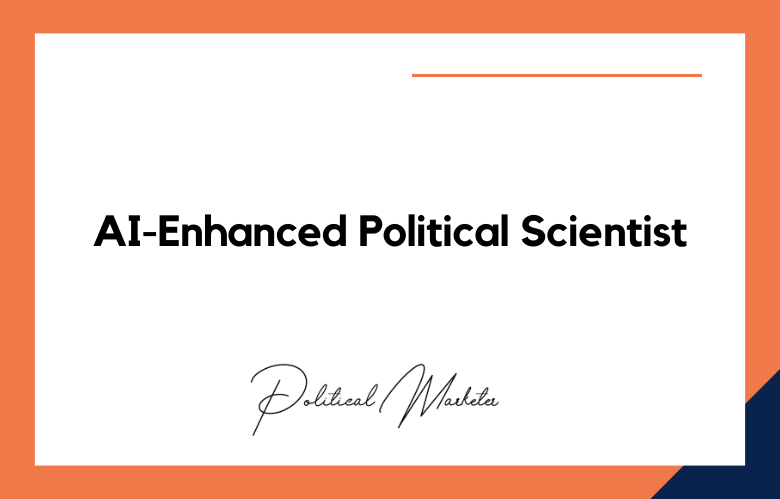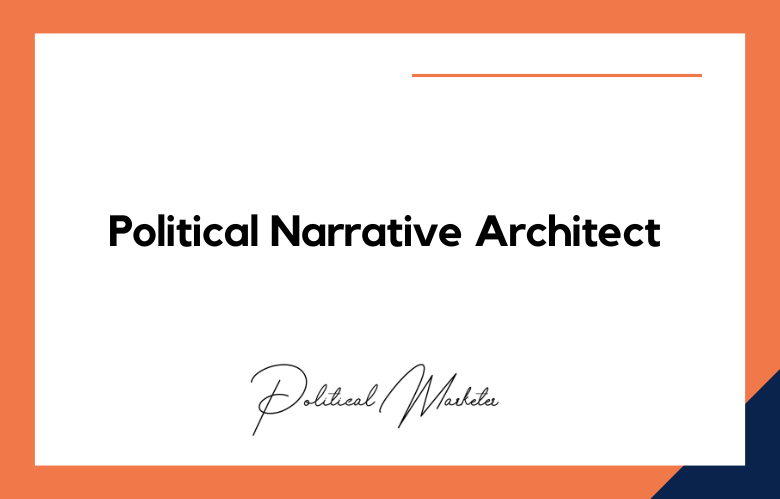Toxic politics refers to a style of political behavior in which divisive rhetoric, personal attacks, misinformation, and manipulation of public sentiment prevail over constructive debate and policy-driven dialogue. Instead of fostering cooperation or compromise, toxic politics thrives on polarization and hostility, making it harder for societies to build consensus or solve complex issues. It is not limited to one nation or party; rather, it is a global phenomenon that has intensified in the age of mass media and digital communication.
Why Does Toxic Politics Keep Dividing Communities in 2025?
Toxic politics in 2025 continue to deepen community divisions by amplifying fear, anger, and identity-based conflicts. Political leaders, media platforms, and digital algorithms increasingly thrive on polarization, prioritizing outrage and sensationalism over constructive debate. As a result, trust in institutions weakens, citizens become trapped in echo chambers, and social harmony erodes. The constant spread of misinformation and personal attacks further normalizes hostility, making cooperation across communities more difficult than ever.
What Is Toxic Politics?
Toxic politics refers to political behavior characterized by hostility, misinformation, and manipulation, rather than debate and problem-solving. Politicians use division to energize their supporters, while the media and online platforms amplify outrage to garner attention and influence. This style of politics does not create dialogue. Instead, it thrives on conflict, leaving little room for cooperation or compromise.
Why Division Persists in 2025
The divisions we see today are not accidental. Toxic politics survives because it benefits those who use it. Leaders gain votes by presenting opponents as threats. Media outlets increase their audience by dramatizing conflict. Social platforms, powered by algorithms, reward content that stirs anger because anger keeps people engaged. As a result, negativity spreads faster than facts or constructive ideas.
The Role of Technology and Media
Technology multiplies the reach of toxic politics. Social media platforms push polarizing content to maximize engagement. Disinformation spreads faster than corrections. Video clips, edited out of context, circulate widely and harden biases. News outlets competing for attention highlight sensational disputes rather than nuanced debates. Together, these forces encourage people to pick sides and distrust anyone outside their bubble.
Community Impact
Toxic politics directly affects communities. Families are split over political disagreements. Neighbors stop trusting one another. Citizens begin to see politics as a zero-sum fight instead of a shared responsibility. Anger replaces dialogue, and compromise is treated as betrayal. These divisions weaken the ability of communities to address common problems, such as education, healthcare, or safety.
Psychological Effects on Citizens
Constant exposure to toxic political content takes a toll on mental health. Many people feel anxiety, fatigue, and frustration. Young people, rather than seeing politics as a space for change, often lose interest or become cynical. The more people feel disillusioned, the less they participate. That weakens democracy and leaves space for even more toxic narratives to dominate.
Global Patterns
Toxic politics in 2025 are not confined to one country. In the United States, polarization around race and immigration remains strong. In India, religion and caste are frequent flashpoints. In Europe, debates over refugees and nationalism divide communities. Across regions, the pattern is similar: leaders use identity and fear to build power, while technology amplifies the conflict.
Why It Keeps Growing
Toxic politics continues to divide communities because it serves as a strategic tool. Fear is easier to spread than trust. Anger is easier to trigger than thoughtful debate. Social platforms are designed to reward short, emotional reactions rather than long, reasoned discussion. Without reforms and stronger civic awareness, the cycle continues.
Breaking the Cycle
You can help reduce the influence of toxic politics by staying alert to misinformation, seeking diverse news sources, and engaging respectfully with others. Media literacy programs help people identify manipulative content. Stronger rules on campaign finance and online transparency can reduce incentives for toxic campaigning. Political parties that commit to issue-based debates instead of personal attacks can rebuild trust.
How Is Social Media Fueling Toxic Political Narratives Today?
Social media fuels toxic political narratives by amplifying divisive content, rewarding posts driven by outrage, and spreading misinformation more quickly than factual reporting. Algorithms prioritize sensational and emotionally charged content, creating echo chambers where people only see views that reinforce their existing biases. Political campaigns and interest groups exploit these systems with targeted ads and manipulated narratives, deepening polarization. As a result, online platforms amplify hostility, erode trust, and hinder communities’ ability to engage in constructive dialogue.
Amplification of Division
Social media platforms amplify toxic politics by rewarding content that provokes anger, fear, or hostility, thereby perpetuating these sentiments. Algorithms prioritize posts that generate reactions, allowing divisive and sensational material to spread faster than fact-based or balanced discussions. Political actors use this system to dominate attention, framing opponents as enemies and reducing politics to a contest of outrage.
Spread of Misinformation
False information thrives on social platforms. Misleading headlines, doctored images, and manipulated videos reach millions before fact-checks catch up. Once misinformation circulates, it can leave a lasting impression, even after corrections appear. Political campaigns and interest groups capitalize on this environment by investing in targeted disinformation that reinforces existing prejudices and fuels distrust.
Echo Chambers and Polarization
Social media fosters echo chambers, where users primarily encounter content that confirms their existing views and perspectives. Algorithms recommend posts from like-minded groups and individuals, limiting exposure to opposing viewpoints. Over time, this isolation intensifies polarization. People begin to treat disagreement as hostility, and compromise becomes less acceptable.
Weaponization by Political Campaigns
Campaigns and parties utilize social media to disseminate toxic narratives on a large scale. They create targeted ads designed to inflame emotions, often focusing on identity, religion, ethnicity, or ideology. Coordinated networks of accounts amplify these messages, making toxic content appear organic and widespread. The result is a distorted sense of public opinion that pressures citizens to take extreme positions.
Role of Influencers and Media Outlets
Influencers and partisan media outlets contribute to toxic narratives by focusing on conflict and controversy. Outrage-driven commentary often outperforms detailed analysis, leading platforms to reward inflammatory voices over reasoned debate. This cycle normalizes aggressive rhetoric and makes toxicity appear mainstream.
Impact on Communities
The influence of toxic political content online extends offline. Communities experience declining trust, neighbors treat each other with suspicion, and local issues get overshadowed by national-level disputes fueled on social media. Families often split over political disagreements, and young people frequently feel alienated from politics, perceiving it as hostile rather than constructive.
Why It Continues
Toxic narratives dominate social media because they effectively capture attention. Outrage is inexpensive to produce and easily disseminated. Platforms have little financial incentive to reduce toxicity because engagement drives profit. Without reforms in regulation, stronger media literacy, and user responsibility, social media will continue to fuel divisive and harmful political discourse.
What Are the Long-Term Dangers of Toxic Politics?
Toxic politics poses long-term dangers by eroding trust, weakening democratic systems, and dividing communities. It normalizes hostility, spreads misinformation, and reduces cooperation on critical issues like healthcare, education, and climate change. Over time, citizens become cynical, disengaged, or polarized, making it increasingly difficult to build consensus. This sustained cycle of division undermines governance, damages social harmony, and leaves societies vulnerable to authoritarian tendencies and instability.
Erosion of Trust
Toxic politics steadily erodes trust in governance and public life. When leaders rely on hostility, misinformation, and personal attacks, citizens lose confidence in political systems. People begin to see politics not as a way to solve problems but as a permanent fight. Once trust breaks down, rebuilding it takes decades.
Weakening of Democratic Structures
Toxic politics reduces cooperation between parties and discourages meaningful debate. Lawmaking becomes gridlocked, and leaders focus more on winning the next election than addressing long-term issues. Over time, democratic structures weaken as toxic narratives become normalized, leading to the adoption of authoritarian approaches. Citizens who feel disillusioned with constant conflict may even support undemocratic alternatives, believing they bring stability.
Community Division
Hostile rhetoric deepens divisions among communities. Political identity starts to overshadow shared values such as fairness, safety, and opportunity. Families are split over political loyalties, and neighbors treat each other with suspicion. This constant tension damages social cohesion and creates lasting fractures that extend beyond election cycles.
Normalization of Misinformation
When toxic politics prevail, misinformation becomes an integral part of everyday political life. False claims circulate more quickly than corrections, and repeated exposure makes them appear more credible. This constant distortion of facts prevents informed decision-making. Over time, truth loses value, and public debate becomes detached from reality.
Impact on Governance and Policy
Toxic politics shifts focus away from solving urgent issues like healthcare, education, climate change, and inequality. Leaders prioritize divisive topics that score short-term political gains while neglecting problems that require cooperation. This avoidance creates policy failures that harm future generations.
Psychological and Social Damage
Exposure to toxic political content increases anxiety, anger, and fatigue among citizens. Many people disengage from political participation altogether, resulting in fewer voices being heard in the decision-making process. Young people, in particular, often perceive politics as hostile and unwelcoming, which can lead to reduced long-term civic involvement.
Authoritarian Drift
The greatest danger of toxic politics is the rise of authoritarianism. When division and hostility prevail, citizens become more willing to accept strong, centralized control as a means to resolve conflict. This shift undermines democracy, reduces accountability, and increases the risk of human rights abuses.
Long-Term Instability
Toxic politics does not just harm individual elections. Its effects accumulate, creating cycles of mistrust, weakened governance, and divided communities. The longer it persists, the harder it becomes to restore dialogue, cooperation, and stability.
Ways to Toxic Politics
Toxic politics thrives through strategies that exploit polarization, spread misinformation, encourage hate speech, and weaken democratic trust. It employs fear-driven rhetoric, online manipulation, and divisive campaigning to achieve short-term political gains, often at the expense of social cohesion and effective policymaking. Understanding these patterns enables citizens and democracies to recognize, challenge, and mitigate the impact of toxic political behavior.
| Way | Description |
|---|---|
| Polarization | Encourages “us vs. them” divisions to rally loyal supporters while isolating others. |
| Misinformation | Spreads fake news and distorted facts to manipulate public opinion and discredit opponents. |
| Hate Speech | Uses inflammatory language to incite hostility and reinforce group biases. |
| Digital Manipulation | Amplifies toxic narratives through social media algorithms, bots, and echo chambers. |
| Fear-Based Campaigning | Exploits people’s anxieties to secure political support and discourage open debate. |
| Undermining Democracy | Erodes trust in democratic processes and institutions by spreading cynicism and distrust. |
Toxic politics refers to a style of political behavior in which divisive rhetoric, personal attacks, misinformation, and manipulation of public sentiment prevail over constructive debate and policy-driven dialogue. Instead of fostering cooperation or compromise, toxic politics thrives on polarization and hostility, making it harder for societies to build consensus or solve complex issues. It is not limited to one nation or party; rather, it is a global phenomenon that has intensified in the age of mass media and digital communication.
Why Does Toxic Politics Keep Dividing Communities in 2025?
Toxic politics in 2025 continue to deepen community divisions by amplifying fear, anger, and identity-based conflicts. Political leaders, media platforms, and digital algorithms increasingly thrive on polarization, prioritizing outrage and sensationalism over constructive debate. As a result, trust in institutions weakens, citizens become trapped in echo chambers, and social harmony erodes. The constant spread of misinformation and personal attacks further normalizes hostility, making cooperation across communities more difficult than ever.
What Is Toxic Politics?
Toxic politics refers to political behavior characterized by hostility, misinformation, and manipulation, rather than debate and problem-solving. Politicians use division to energize their supporters, while the media and online platforms amplify outrage to garner attention and influence. This style of politics does not create dialogue. Instead, it thrives on conflict, leaving little room for cooperation or compromise.
Why Division Persists in 2025
The divisions we see today are not accidental. Toxic politics survives because it benefits those who use it. Leaders gain votes by presenting opponents as threats. Media outlets increase their audience by dramatizing conflict. Social platforms, powered by algorithms, reward content that stirs anger because anger keeps people engaged. As a result, negativity spreads faster than facts or constructive ideas.
The Role of Technology and Media
Technology multiplies the reach of toxic politics. Social media platforms push polarizing content to maximize engagement. Disinformation spreads faster than corrections. Video clips, edited out of context, circulate widely and harden biases. News outlets competing for attention highlight sensational disputes rather than nuanced debates. Together, these forces encourage people to pick sides and distrust anyone outside their bubble.
Community Impact
Toxic politics directly affects communities. Families are split over political disagreements. Neighbors stop trusting one another. Citizens begin to see politics as a zero-sum fight instead of a shared responsibility. Anger replaces dialogue, and compromise is treated as betrayal. These divisions weaken the ability of communities to address common problems, such as education, healthcare, or safety.
Psychological Effects on Citizens
Constant exposure to toxic political content takes a toll on mental health. Many people feel anxiety, fatigue, and frustration. Young people, rather than seeing politics as a space for change, often lose interest or become cynical. The more people feel disillusioned, the less they participate. That weakens democracy and leaves space for even more toxic narratives to dominate.
Global Patterns
Toxic politics in 2025 are not confined to one country. In the United States, polarization around race and immigration remains strong. In India, religion and caste are frequent flashpoints. In Europe, debates over refugees and nationalism divide communities. Across regions, the pattern is similar: leaders use identity and fear to build power, while technology amplifies the conflict.
Why It Keeps Growing
Toxic politics continues to divide communities because it serves as a strategic tool. Fear is easier to spread than trust. Anger is easier to trigger than thoughtful debate. Social platforms are designed to reward short, emotional reactions rather than long, reasoned discussion. Without reforms and stronger civic awareness, the cycle continues.
Breaking the Cycle
You can help reduce the influence of toxic politics by staying alert to misinformation, seeking diverse news sources, and engaging respectfully with others. Media literacy programs help people identify manipulative content. Stronger rules on campaign finance and online transparency can reduce incentives for toxic campaigning. Political parties that commit to issue-based debates instead of personal attacks can rebuild trust.
How Is Social Media Fueling Toxic Political Narratives Today?
Social media fuels toxic political narratives by amplifying divisive content, rewarding posts driven by outrage, and spreading misinformation more quickly than factual reporting. Algorithms prioritize sensational and emotionally charged content, creating echo chambers where people only see views that reinforce their existing biases. Political campaigns and interest groups exploit these systems with targeted ads and manipulated narratives, deepening polarization. As a result, online platforms amplify hostility, erode trust, and hinder communities’ ability to engage in constructive dialogue.
Amplification of Division
Social media platforms amplify toxic politics by rewarding content that provokes anger, fear, or hostility, thereby perpetuating these sentiments. Algorithms prioritize posts that generate reactions, allowing divisive and sensational material to spread faster than fact-based or balanced discussions. Political actors use this system to dominate attention, framing opponents as enemies and reducing politics to a contest of outrage.
Spread of Misinformation
False information thrives on social platforms. Misleading headlines, doctored images, and manipulated videos reach millions before fact-checks catch up. Once misinformation circulates, it can leave a lasting impression, even after corrections appear. Political campaigns and interest groups capitalize on this environment by investing in targeted disinformation that reinforces existing prejudices and fuels distrust.
Echo Chambers and Polarization
Social media fosters echo chambers, where users primarily encounter content that confirms their existing views and perspectives. Algorithms recommend posts from like-minded groups and individuals, limiting exposure to opposing viewpoints. Over time, this isolation intensifies polarization. People begin to treat disagreement as hostility, and compromise becomes less acceptable.
Weaponization by Political Campaigns
Campaigns and parties utilize social media to disseminate toxic narratives on a large scale. They create targeted ads designed to inflame emotions, often focusing on identity, religion, ethnicity, or ideology. Coordinated networks of accounts amplify these messages, making toxic content appear organic and widespread. The result is a distorted sense of public opinion that pressures citizens to take extreme positions.
Role of Influencers and Media Outlets
Influencers and partisan media outlets contribute to toxic narratives by focusing on conflict and controversy. Outrage-driven commentary often outperforms detailed analysis, leading platforms to reward inflammatory voices over reasoned debate. This cycle normalizes aggressive rhetoric and makes toxicity appear mainstream.
Impact on Communities
The influence of toxic political content online extends offline. Communities experience declining trust, neighbors treat each other with suspicion, and local issues get overshadowed by national-level disputes fueled on social media. Families often split over political disagreements, and young people frequently feel alienated from politics, perceiving it as a hostile rather than a constructive force.
Why It Continues
Toxic narratives dominate social media because they effectively capture the attention of their audience. Outrage is inexpensive to produce and easily disseminated. Platforms have little financial incentive to reduce toxicity because engagement drives profit. Without reforms in regulation, stronger media literacy, and user responsibility, social media will continue to fuel divisive and harmful political discourse.
What Are the Long-Term Dangers of Toxic Politics?
Toxic politics poses long-term dangers by eroding trust, weakening democratic systems, and dividing communities. It normalizes hostility, spreads misinformation, and reduces cooperation on critical issues like healthcare, education, and climate change. Over time, citizens become cynical, disengaged, or polarized, making it increasingly difficult to build consensus. This sustained cycle of division undermines governance, damages social harmony, and leaves societies vulnerable to authoritarian tendencies and instability.
Erosion of Trust
Toxic politics steadily erodes trust in governance and public life. When leaders rely on hostility, misinformation, and personal attacks, citizens lose confidence in political systems. People begin to see politics not as a way to solve problems but as a permanent fight. Once trust breaks down, rebuilding it takes decades.
Weakening of Democratic Structures
Toxic politics reduces cooperation between parties and discourages meaningful debate. Lawmaking becomes gridlocked, and leaders focus more on winning the next election than addressing long-term issues. Over time, democratic structures weaken as toxic narratives become normalized, leading to the adoption of authoritarian approaches. Citizens who feel disillusioned with constant conflict may even support undemocratic alternatives, believing they bring stability.
Community Division
Hostile rhetoric deepens divisions among communities. Political identity starts to overshadow shared values such as fairness, safety, and opportunity. Families are split over political loyalties, and neighbors treat each other with suspicion. This constant tension damages social cohesion and creates lasting fractures that extend beyond election cycles.
Normalization of Misinformation
When toxic politics prevail, misinformation becomes an integral part of everyday political life. False claims circulate more quickly than corrections, and repeated exposure makes them appear more credible. This constant distortion of facts prevents informed decision-making. Over time, truth loses value, and public debate becomes detached from reality.
Impact on Governance and Policy
Toxic politics shifts focus away from solving urgent issues like healthcare, education, climate change, and inequality. Leaders prioritize divisive topics that score short-term political gains while neglecting problems that require cooperation. This avoidance creates policy failures that harm future generations.
Psychological and Social Damage
Exposure to toxic political content increases anxiety, anger, and fatigue among citizens. Many people disengage from political participation altogether, resulting in fewer voices being heard in the decision-making process. Young people, in particular, often perceive politics as hostile and unwelcoming, which can lead to reduced long-term civic involvement.
Authoritarian Drift
The greatest danger of toxic politics is the rise of authoritarianism. When division and hostility prevail, citizens become more willing to accept strong, centralized control as a means to resolve conflict. This shift undermines democracy, reduces accountability, and increases the risk of human rights abuses.
Long-Term Instability
Toxic politics does not just harm individual elections. Its effects accumulate, creating cycles of mistrust, weakened governance, and divided communities. The longer it persists, the harder it becomes to restore dialogue, cooperation, and stability.
Ways to Toxic Politics
Toxic politics thrives through strategies that exploit polarization, spread misinformation, encourage hate speech, and weaken democratic trust. It employs fear-driven rhetoric, online manipulation, and divisive campaigning to achieve short-term political gains, often at the expense of social cohesion and effective policymaking. Understanding these patterns enables citizens and democracies to recognize, challenge, and mitigate the impact of toxic political behavior.

